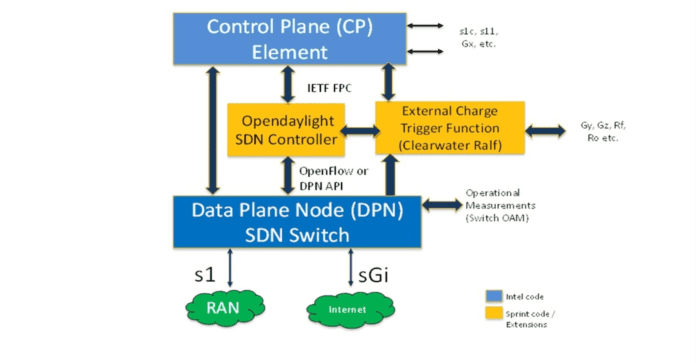Developed with Intel Labs, Sprint says C3PO combines open source software with off-the-shelf hardware to drive network efficiencies
The ever-increasing complexity of evolving telecommunications networks is forcing operators to quickly virtualize and automate network management and operational processes to keep up with the flexibility and scale demanded by consumers. The push to network functions virtualization (NFV) and software-defined networking (SDN) has prompted a shift away from proprietary equipment and software control to the use of open source software and less expensive, off-the-shelf data center hardware. One of the most visible examples is AT&T’s ECOMP, which was recently joined with Huawei’s Open-O into the Linux Foundation-managed ONAP. Now, Sprint, in partnership with Intel Labs, has entered the mix with C3PO.
Let’s unpack this acronym within an acronym. C3PO stands for Clean CUPS Core for Packet Optimization. CUPS stands for Control and User Plane Separation. While it’s not clear if Sprint’s C3PO is “fluent in over six million forms of communication,” the new reference, contributed to OpenDaylight, covers seven network functions Sprint described as “applicable to essentially all user traffic.” Those are:
- Serving gateway
- Packet gateway
- Deep packet inspection
- Child protection filtering
- Carrier-grade network address translation (NAT)
- Static firewall
- Service function chaining classification (ISC)
Sprint VP of Technology Ron Marquardt described the impetus for C3PO in a company blog post: “Over the past few years while preparing to move from proprietary hardware to virtualized solutions, it became increasingly important for us to understand how to best optimize our network applications for provisioning on an Intel processor-based server. When our work with Intel Labs developing C3PO first began, CUPS was just a nascent concept, and the industry work being done on NFV was still theoretical. For simplicity, the latter was often depicted as individual software elements conceptually interconnected in a manner that would require significant compute overhead. NFV and SDN were both defined in their own contexts, with little attempt yet to marry these concepts in a performance-optimized manner. It was the early days of the industry’s march to virtual implementations.”
Now, Marquardt said the carrier is working to harden C3PO and expand into new use cases, particularly the internet of things. “As operators scale IoT, low-cost solutions will be vital to drive viable economics when connected devices grow to 10s and 200s of billions in number. We believe a commercial version of C3PO to be a potential solution well-targeted for low-cost, large-scale applications such as this.” He also said Sprint will use information from 3GPP and IETF to help develop 5G compatibility.
Sprint has been working on this project with Intel for four years. Lab tests used Dell EMC DSS 9000 rack scale infrastructure running dual socket 14-core Intel Xeon processors.

